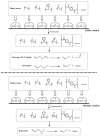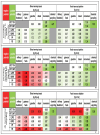Emerging Biochemical Conversion for Plastic Waste Management: A Review
- PMID: 40142030
- PMCID: PMC11946717
- DOI: 10.3390/molecules30061255
Emerging Biochemical Conversion for Plastic Waste Management: A Review
Abstract
In recent years, vast amounts of plastic waste have been released into the environment worldwide, posing a severe threat to human health and ecosystems. Despite the partial success of traditional plastic waste management technologies, their limitations underscore the need for innovative approaches. This review provides a comprehensive overview of recent advancements in chemical and biological technologies for converting and utilizing plastic waste. Key topics include the technical parameters, characteristics, processes, and reaction mechanisms underlying these emerging technologies. Additionally, the review highlights the importance of conducting economic analyses and life cycle assessments of these emerging technologies, offering valuable insights and establishing a robust foundation for future research. By leveraging the literature from the last five years, this review explores innovative chemical approaches, such as hydrolysis, hydrogenolysis, alcoholysis, ammonolysis, pyrolysis, and photolysis, which break down high-molecular-weight macromolecules into oligomers or small molecules by cracking or depolymerizing specific chemical groups within plastic molecules. It also examines innovative biological methods, including microbial enzymatic degradation, which employs microorganisms or enzymes to convert high-molecular-weight macromolecules into oligomers or small molecules through degradation and assimilation mechanisms. The review concludes by discussing future research directions focused on addressing the technological, economic, and scalability challenges of emerging plastic waste management technologies, with a strong commitment to promoting sustainable solutions and achieving lasting environmental impact.
Keywords: catalyst; circular economy; conversion; mechanism; plastic waste.
Conflict of interest statement
The authors declare no conflicts of interest.
Figures






References
-
- An L.H., Li H., Wang F.F., Deng Y.X., Xu Q.J. International Governance Progress in Marine Plastic Litter Pollution and Policy Recommendations. Res. Environ. Sci. 2022;35:1334–1340.
Publication types
MeSH terms
Substances
LinkOut - more resources
Full Text Sources

